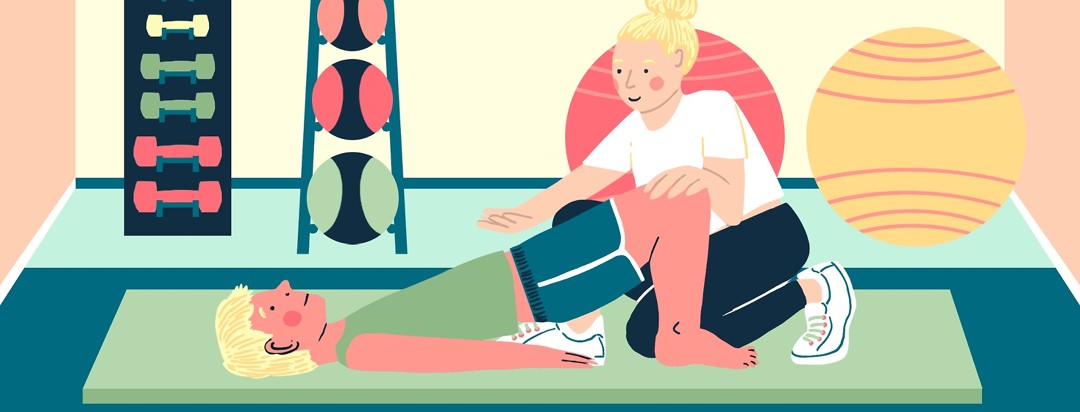Parkinson’s Disease and Pelvic Floor Dysfunction
Parkinson’s disease (PD) can affect many aspects of the body, certainly not to leave out the pelvic floor. What’s the pelvic floor, you ask? It is a group of muscles in the pelvis that functions as the dynamic floor of your torso.
Pelvic floor dysfunctions can include problems you may have with bladder, bowel, and sexual functions. These functions are controlled through reflexes and voluntary actions.1
The reflexes are referred to as neurogenic, or non-motor. Pelvic floor dysfunctions due to Parkinson’s disease mostly affect the non-motor portion of bladder, bowel, and sexual functions. The areas of the brain that control these functions and become affected by PD are usually non-responsive to levodopa treatments.1
Pelvic floor dysfunction in Parkinson's
Common dysfunctions are bladder overactivity, causing urinary urgency, frequency, and incontinence (unintentional leaking). Getting up at night to use the bathroom (nocturia) is the most prevalently reported non-motor symptom with PD, reported by more than 60 percent 1
However, weak voiding is also a common dysfunction. So you may feel like you have to go frequently, but when you do go, it may take a while to rid of it all. Constipation is another common issue that may arise, and being constipated can affect medication absorption.2,3
What causes pelvic floor dysfunction?
What is it that actually causes these dysfunctions? The answer is a lack of synergy between the reflexive muscle actions (for example, your bladder contracting when it becomes full) and the voluntary muscle actions (for example, relaxing your pelvic floor muscles to allow voiding).2
To be able to properly relieve your body of its bladder and bowel contents, your body relies on the reflexes AND the voluntary control you have of your pelvic floor.
How do you manage pelvic floor dysfunction?
So, what can be done to alleviate these issues that can seem so embarrassing? First of all, know that if you have any of these problems, you’re not alone! And studies show great significance to quality of life measures affected.
Second of all, let your physician and/or care team know. Interventions can be done to help. Your physician may use an anticholinergic medication for bladder issues; dietary fibers, laxatives, and a seratonergic medication for bowel issues; and a phosphodiesterase-inhibitor medication for sexual issues.1
Additionally, ask for a referral to a pelvic floor specialist physical therapist (PT) to improve your pelvic floor function because exercise-based interventions have been shown to promote improvements and allow a better quality of life.3
As mentioned, bladder, bowel, and sexual functions are both consciously and unconsciously controlled, and pelvic floor strengthening can help optimize the functions of each.
Through neuromuscular re-education training, reflexive actions can be optimized by promoting repetitive firing of the neurons in the circuits to allow the body to adapt to the most efficient path. Through strength training, muscles under voluntary control have less strain and improved contract-relax properties.
Exercises to do at home
What if you can’t get to a pelvic floor PT? Here is a general progression program with the goal of improving pelvic floor neuromuscular control and strength:
First, begin these exercises while in a lying position. Start by contracting your pelvic floor for 2 seconds. To contract your pelvic floor, you should squeeze as if you are trying to stop urine flow and bowels moving. You should feel an upward pull of your pelvic floor. You should not strain or hold your breath while performing a contraction.
After 2 seconds of a good contraction, use 4 seconds to completely release that contraction. Do this as many times as you can until you notice your pelvic floor fatiguing.
When you start noticing yourself straining or holding your breath to try to make your contraction, then that is the end of your set. For some, you may only be able to do it a few times before noticing fatigue, and that’s ok!
Do this set 2 times a day, building yourself up to be able to do 20 "contract for 2 seconds, relax for 4 seconds" repetitions in each set before fatiguing the muscles.
Once you have mastered that while in a lying position, work toward performing it in a seated position with good, upright posture.
Working up to more exercise
When you can perform up to 20 continuous repetitions two times per day in a seated position, you can then up the ante by performing each repetition with a 5-second contract and a 10-second relax, working up to 20 times, twice a day.
You can also add in rapid-fire contractions at this point as well. To do this, you will quickly tighten your pelvic floor and quickly release it. Make sure you release the muscles fully before tightening again. You can do this about 10 times, twice a day.
So, to recap, you’ll be working up to performing 5-second tighten/10-second releases for 20 times, 2 times a day AND rapid-fire contractions 10 times, 2 times a day. I would recommend spacing your sets out throughout the day.
I hope this is easy for you to follow and that you are able to notice improvements in your pelvic floor functions!

Join the conversation